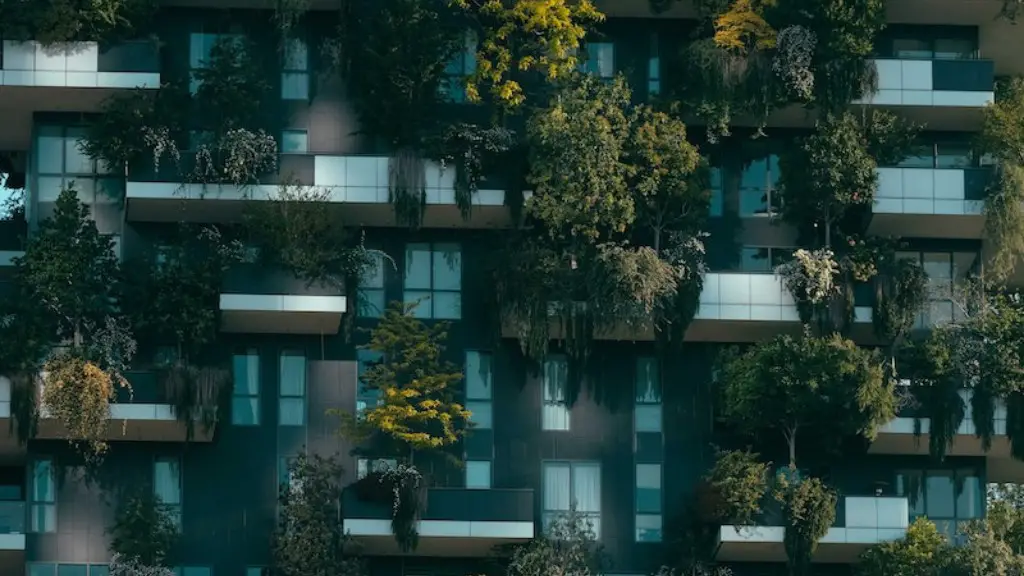Aesthetic Appeal
One of the primary characteristics of architecture is its aesthetic appeal. This is what makes a building beautiful, contributing to its aesthetic value and its ability to engage an audience. A well-designed building should be architecturally sound, as well as aesthetically pleasing. When buildings are considered aesthetically appealing, people are more likely to appreciate them. Great architecture is often an object of admiration or envy, attracting attention wherever it may be situated.
Aesthetic design choices may be intentional or acquired over time. For example, in some older buildings, architectural elements such as rustic brick walls, old beams, and ironwork may contribute to its visual interest. On the other hand, modern buildings may feature more contemporary or stark designs, using sharp angles and lines. The materials used in a building’s construction can also contribute to its overall aesthetic appeal, impacting how it looks and how well it stands the test of time.
Functionality
Architecture is not just about making something look nice, but it’s also about making it function the way it should. A building must be designed and built with safety, efficiency, and practicality in mind. The layout of a building needs to make the most of the space available and be structured logically, so that it is comfortable to live in or work in. The choice of materials is also important, as certain materials can be better suited to certain climates, space constraints, and general usage. Functional features such as plumbing, air conditioning and ventilation, lighting, fire control systems, and space for electrical wiring must also be taken into account.
Durability
Durability is another essential characteristic of architecture. This refers to the ability of the building to withstand the effects of wear and tear and the passage of time. Buildings need to be engineered to withstand extreme weather conditions, temperature fluctuations, and seismic activity, if applicable. The choice of materials and the structural integrity of a building are key to its longevity. The building should be designed with the environment in mind, to ensure that it remains habitable for years to come.
Cultural Significance
Architecture has the power to influence our lives and shape our culture. Buildings are expressions of our beliefs, values, and aspirations. As such, it can also offer insight into our history and be a reminder of a particular era, society, or civilization. Cultural significance can be seen in a building’s design, style, and purpose. It can reflect a certain geography or cultural ethos, representing a society’s traditions, beliefs, and values.
Accessibility
When designing a building, architects must pay close attention to accessibility. This involves making sure that the building is easy to access, use, and move around in. This includes making sure that all areas of the building, particularly entryways and stairwells, are free of obstructions and are easy for everyone to access. Steps should be avoided and ramps should be included where necessary. Accessibility also extends to the design and layout of rooms, fixtures, and furniture, so that people of all abilities and sizes can use the building.
Sustainability
Sustainability is a characteristic becoming increasingly important in the realm of architecture. This follows the trend of environmental conservation and ecological concerns, which have been increasing in prominence in recent years. To be considered sustainable, a building must adhere to certain standards of energy efficiency and conservation. This includes utilizing sustainable materials, limiting water waste, and taking steps to reduce the building’s carbon footprint.
Adaptability
The final characteristic of architecture is its adaptability. Buildings should be flexible and able to accommodate changing lifestyles and technological advancements. A good design should account for the possibility of change, modifications, or expansions that may be necessary in the future. This includes ensuring that the building is capable of being adapted should the need arise. Walls can be removed, electrical wiring added, and the overall structure modified, without compromising the original design.
Social Impact
One of the most important aspects of architecture is its potential to create positive social change. Buildings can have a positive or negative impact on the community in which they are located. This means that architects need to carefully consider how their design might affect the lives of those living and working in the area. A good design should reflect not just the functional requirements of a building, but also its impact on people and society as a whole.
Economic Impact
Architecture also has the potential to create economic opportunities. Buildings create jobs and bring financial gain to the local area. In some cases, they can also be a source of cultural pride and can attract tourism, generating more money for the local economy. What’s more, buildings have the potential to stimulate investment, particularly in the case of developments for businesses or public sector authorities.
Environmental Impact
Finally, architects must consider the environmental impact of their designs. This means that buildings should be designed with energy-efficiency in mind, so that natural resources are conserved and renewable energy sources are used where possible. Sustainable building materials should be utilized to reduce the buildings’ carbon footprint and contribute to the fight against climate change.
Technology Incorporation
New technologies are changing how we live and interact with our buildings, and architecture must reflect this. As technology advances, buildings must be adapted and modified to accommodate this. This may include incorporating smart home automation, data-driven solutions, or wireless technologies. This can also include integrating renewable energy sources, such as solar or wind, into the buildings’ energy systems.
Health and Safety
The health and safety of those using a building must be taken into account when designing and constructing them. This means that materials used should be free from toxins, for example, and that the building should be designed in accordance with safety regulations. This could include fire safety systems, environmental monitoring systems, and emergency exits. Furthermore, the layout of the building should be designed with safety as a priority, and its overall design should prioritize the safety of those inhabiting it.
Flexible Spaces
Buildings should be designed with flexibility in mind, to accommodate changing lifestyles and usage needs. This means that the building should have the capacity to be modified and upgraded over time. This could include the installation of partitions, the design of adaptable spaces, or the addition of new technology solutions or renewable energy sources.
Lighting Solutions
Lighting is essential in creating a pleasant and safe environment when inhabiting a building. Good lighting solutions should be functional, while also being aesthetically pleasing. This may involve taking into account daylight levels and the use of artificial lighting, such as through windows, ceiling fixtures, and wall fixtures. Furthermore, lighting should be energy-efficient, using LED or other energy-saving components.
Green Spaces
Incorporating green space into a building can have multiple benefits. For instance, it can contribute to the overall aesthetic appeal of the building and provide a peaceful and relaxing atmosphere. Additionally, green spaces can also create a more pleasant environment with fewer pollutants, improve air quality, and encourage cognitive development in those inhabiting the building.
Universal Design
Universal design involves designing a building so that it is accessible and useable by people of all ages, abilities, and sizes. This means that the design should eliminate barriers to access, creating an equally enjoyable experience for everyone. This could involve incorporating ramps or other access aids, utilizing inclusive design principles, and providing appropriate signage.
Conclusion
The characteristics of architecture are numerous and varied, but they all serve an essential purpose. Architects must take into account a variety of factors when creating a building, including aesthetics, functionality, durability, cultural significance, accessibility, sustainability, adaptability, and the technical, economic, and environmental implications of their design. A successful building will be a harmonious balance between all of these factors, taking into account both the requirements and the limitations of the space.




